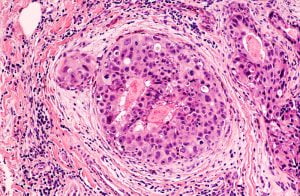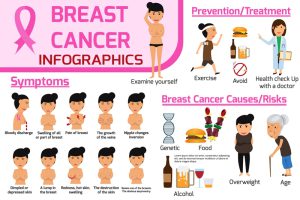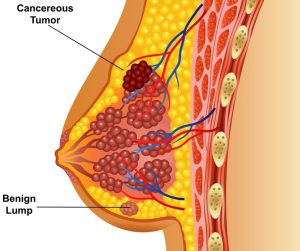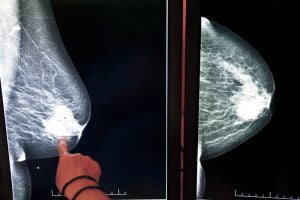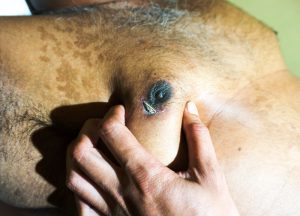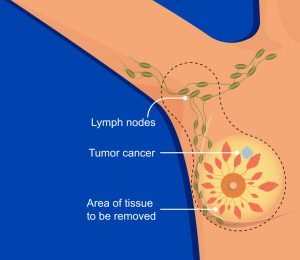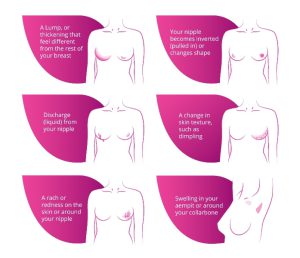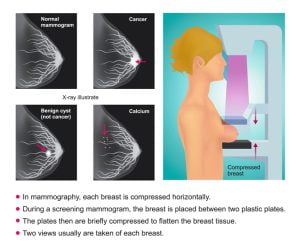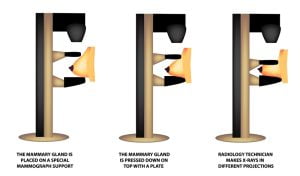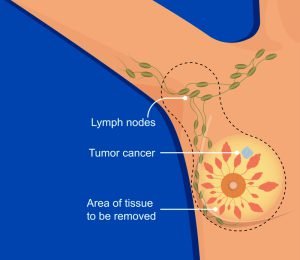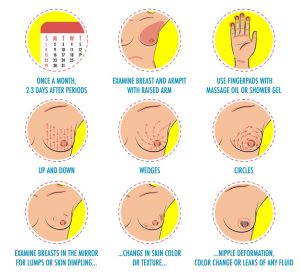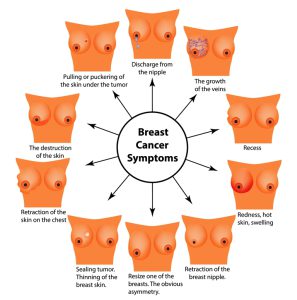Browsing: Breast Cancer Graphics
Comprehensive Information, Resources, and Support on Breast Cancer
Breast biopsy of ductal carcinoma in situ (DCIS), nuclear grade 3 with necrosis (comedocarcinoma in situ) in a woman patient. Cancer cells are confined to the mammary ducts, without invasion in this case.
According to U.S. Breast Cancer Statistics, about 1 in 8 U.S. women (about 12.4%) will develop invasive breast cancer over the course of her lifetime. The chance that a woman will die from breast cancer is about 1 in 38 (about 2.6%). Learn about breast cancer symptoms, early signs, prevention, risks, and treatment.
A tumor is a mass of abnormal tissue. There are two types of breast cancer tumors – those that are non-cancerous, (called benign) and those that are cancerous, which are called ‘malignant’.
The image shows an X-ray mammogram of breast cancer in a woman.
The picture shows an extremely rare right breast cancer in a male patient with excision biopsy scar. .
Mastectomy is the medical term for the surgical removal of one or both breasts, partially or completely. It is usually done to treat breast cancer in men and women. It is usually done to treat or prevent breast cancer. The removed portion often includes the nipple and the areola. Women typically prefer breast reconstruction surgery after the procedure. .
Breast self-exam (BSE), or regularly examining the breasts on your own, can be an effective way to find breast cancer in early stage, when it’s more likely to be treated successfully.
The graphics show symptoms of breast cancer. A lump in the breast is usually a sign of the breast cancer that can be found in self-exam. Not all lumps though indicate breast cancer.
Male breast cancer is a rare type of cancer that forms in the breast tissue of men. Less than 1% of all breast cancers occur in men. Male breast cancer treatment involves surgery, radiation therapy, chemotherapy, hormonal therapy, and targeted therapy. The picture shows an extremely rare right breast cancer in a male patient with excision biopsy scar.
Screening mammography is an X-ray examination of a woman’s breasts to detect breast cancer when the cancer is too small to be felt as a lump.
Diagnosis of breast cancer at an early stage when the symptoms are not yet visible is done through a procedure called mammography. A mammogram is an x-ray image of the breast taken using the procedure. It can be used to diagnose for breast cancer in women who have no signs or symptoms of the disease but are at increased risk. It can also be used if a woman notices a lump or bump or any other sign of breast cancer in any of the breasts. Screening using mammography is a type of mammogram that checks you when you have no symptoms.
Breast self-exam can be a way to find breast cancer early, when it’s more likely to be treated successfully. The technique allows a woman to examine her breast tissue for any physical or visual changes. Both men and women can perform it. It should be ideally done at least once each month beginning at an age of 18. By practicing monthly breast self-examination (BSE) and by visiting your doctor annually for a check-up, you can actively help reduce the chances of getting advanced stage breast cancer.
Learn about breast cancer symptoms and early signs.
ADVERTISEMENT




